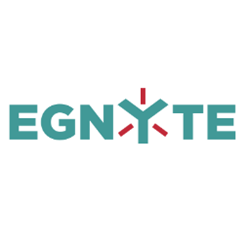Teck Talk: ‘Less Logistics, More Quality Hospitality’
6 Min Read By MRM Staff
Egnyte Co-Founder and Chief Customer Officer Rajesh Ram defines the company’s role as assisting companies with content exchange. The software provider has a large footprint throughout the hospitality industry including names such as Kona Grill, MOD Pizza, Twin Peaks, Black Angus, The Crab Shack and Hakkasanm. Egnyte’s solution is being deployed by restaurants with as little as 25 employees all the way up to restaurants with 2,500+ employees.
In his role as Chief Customer Officer, Ram works with customers and internal teams to ensure that the comprehensive voice of each customer is reflected in strategy and execution. Previously, Ram worked at Oracle, KPMG and Valdero Corporation. He holds a BS in Engineering from the Indian Institute of Technology-Madras and received an MS in Industrial Engineering from the University of Minnesota.
In this Tech Talk, Ram speaks with Modern Restaurant Management (MRM) magazine about the intersection of hospitality and technology, efficiency, mobile solutions and data security.
How do restaurants use Egnyte’s products and services?
Restaurants leverage Egnyte’s products and services for a multitude of reasons, many of which are rooted in their need to quickly and securely exchange content. That content can range from financial information such as sales spreadsheets to operational information like new menus or marketing collateral. Restaurants are highly transactional which makes their use of Egnyte Connect, our content collaboration solution, vital to their day-to-day business.
One example from our customer Kona Grill, who has 45 locations throughout the US, is their use of Egnyte Connect by general managers at each of their locations. The GMs used to spend countless hours uploading payroll, sales reports, inventory counts, etc. via an arduous VPN (Virtual Private Network) process. Now, by leveraging Egnyte Connect, GMs can simply save these files to the cloud and they are accessible to all the right people throughout the organization within minutes – saving an estimated 30 percent of their time. That time savings has allowed GMs to get back out on the floor and put more energy into providing the best customer experience possible, which anyone in the restaurant industry will tell you is a top priority for them.
What are unique about restaurant solutions?

Restaurants are typically highly distributed organizations, having locations spread out across different cities throughout the U.S. or even internationally, centralizing their back office functions at an individual headquarters.
In addition to that, it is also common practice for restaurants to have a noticeable mix of permanent and temporary employees throughout their organization. This creates significant challenges for collaboration, especially when you have multiple people internally and externally working from a single piece of content – menus, pricing, policies, procedures, etc.
Therefore, restaurants have to implement a flexible solution that makes collaboration easier for all parties involved without sacrificing security, which is especially important when they deal with sensitive content like intellectual property, finance documents, or employee information.
What are some common issues restaurants face regarding data breaches, privacy and security?
Restaurants are increasingly concerned about protecting their intellectual property, expansion plans and financial information. As mentioned before, given their highly transactional nature, restaurants often struggle to maintain a proper security envelope across all of their content – especially for larger organizations.
There can be situations where folders with sensitive content are shared to the wrong contractor or consultant. We have also heard of situations where past employees have access to content long after they have left the company, which should never happen. There is a laundry list of issues that restaurants face, all of which can be mitigated with the right content collaboration and management solution.
How important are mobile solutions for restaurants?
Mobile solutions have a two-fold meaning when it comes to restaurants. There are mobile solutions for the customers and mobile solutions for the employees. In today’s digital age consumers expect most restaurants to leverage some type of technology to enhance their experience. This comes in the form of an app for their pre- and post- dining experience, online ordering apps, and even some who supply mobile devices right at the table for your in-meal entertainment. In this example, mobile solutions are providing restaurants a way to gain a legitimate competitive advantage.
On the employee side it is a much different story. Restaurants are constantly trying to improve operations on the floor, in the kitchen, and back at the office. Mobile solutions have been an excellent answer for doing so. A great example is on the floor, where many restaurants have deployed iPads or personal tablets for waiters and waitresses to take orders, which helps expedite orders, ensure order accuracy, and more. Back in the office, mobile solutions like Egnyte Connect’s mobile app help employees work faster and more efficiently by ensuring they are working on the right versions of documents, at the right time, with the right people. So when you think about it, mobile solutions are becoming an integral part of operations for restaurants in every aspect of their business.
What do you envision the restaurant of the future looking like?
Restaurants are going to need flexible technology solutions that can evolve and grow with their business.
I love working with the restaurant industry because they are constantly pushing the envelope when it comes to customer experience. Restaurant groups are always thinking up new ways to stimulate their guests and create a memorable experience, which these days has involved the intersection of dining and technology.
One of the concepts we recently worked with was a pizza place that offered 20+ craft beers on tap, but the catch was that you were given a bracelet and a glass that allowed you to get however many ounces of beer you purchased. This way you could mix and match or try as many of the beers as you wanted. And ultimately that’s where I think the future of restaurants is headed – customization.
Restaurants are going to continue to find ways to let each and every guest customize their own experience, making a unique connection that will keep them coming back for more. With that being said, restaurants are going to need flexible technology solutions that can evolve and grow with their business.
How does technology promote efficiency in hospitality?
Technology promotes efficiency in a lot of ways, but I would say the clearest example is in its ability to expedite processes. Whether it’s adjusting menus, ordering, or paying your tab, technology is making all of these processes much more efficient, which helps serving guests become more efficient, and then makes restaurants more efficient when scaling their business.
What are the advantages of increasing technology use in the hospitality industry?
Technology enables many advantages, including operational efficiency, time savings, money savings, and much more. However, the most significant advantage of increasing technology use is the improved experience – both for employees and guests. With customers and employees having such a loud voice (thanks to social media and platforms like Yelp! and Glassdoor) it is vital for their experience to be improved by any means necessary.
Technology is typically a quick, cost-effective way to dramatically improve experience for both sides of the counter, creating happier engagements and more positive environments all around. For example, on a recent trip I checked in to a room on my phone before walking into my hotel. I was able to review the hotel map online and choose where I wanted to be. This provided a better experience for both myself and the concierge when I arrived. It was a genuine meet and greet between us and I was on my way in no time, feeling good about the entire process.
How are fears allayed regarding technology taking away from hospitality?
As proven by the example above, I believe technology is really helping to enhance hospitality. By putting the technology in my hands and allowing me to have the control over my own logistics, the employees can place their focus back on customer service and give their undivided attention to my experience.
At restaurants many people are worried that technology will replace order takers or even the hosts/hostesses. I would dismiss that and again look at the fact that technologies, like OpenTable, are making an easier experience for both the restaurant and guests when securing a table. As a result, hosts and hostesses can focus on giving genuine meet and greets and starting the customers’ experience off right – less logistics, more quality hospitality.
In what ways can independent restaurants, who might have less resources, use technology to their advantage?
The cloud, and SaaS (Software as a Service), have made the most advanced technologies available to the smallest and largest organizations alike. Egnyte Connect, which is a cloud-based SaaS solution, can work just as easily and effectively in a small organization with 25 employees as it does in a large one with 25,000+ employees. The capabilities utilized are in line with the size of the organization, so smaller firms can leverage the same solutions with minimal investment of resources. In essence, the solution and its costs are able to scale with the organization.
What trends are you seeing from diners in what they expect from technology and restaurants?
As mentioned before diners are constantly looking for a new, trendy experience, which can often be satisfied through technology. Simple things like interactive TVs at their tables to full-blown electronic ordering systems can help restaurants create a memorable experience for their guests.
From our perspective, one of the things we see most is the desire for improved customer service, which our technology helps with. Starting from HQ and trickling down how managers interact with guests, we believe our technology is helping fulfill their expectations as a guest during their experience and as a loyal customer who interacts with the company when they are not at the restaurant.
What does the name Egnyte mean to you?
When I think about Egnyte, I think about the Spark in our name/logo.  The Spark is at the center of everything we do as a company and it represents our place inside of each and every organization we work with.
The Spark is at the center of everything we do as a company and it represents our place inside of each and every organization we work with.
We see Egnyte as a core tool that transforms the way our customers do business – improving operations, increasing productivity, cutting costs, and much more.
Beyond what we do as a service, the Egnyte name represents the amazing group of people we have working at the company all over the world, creating a product that is truly changing the future of business.

